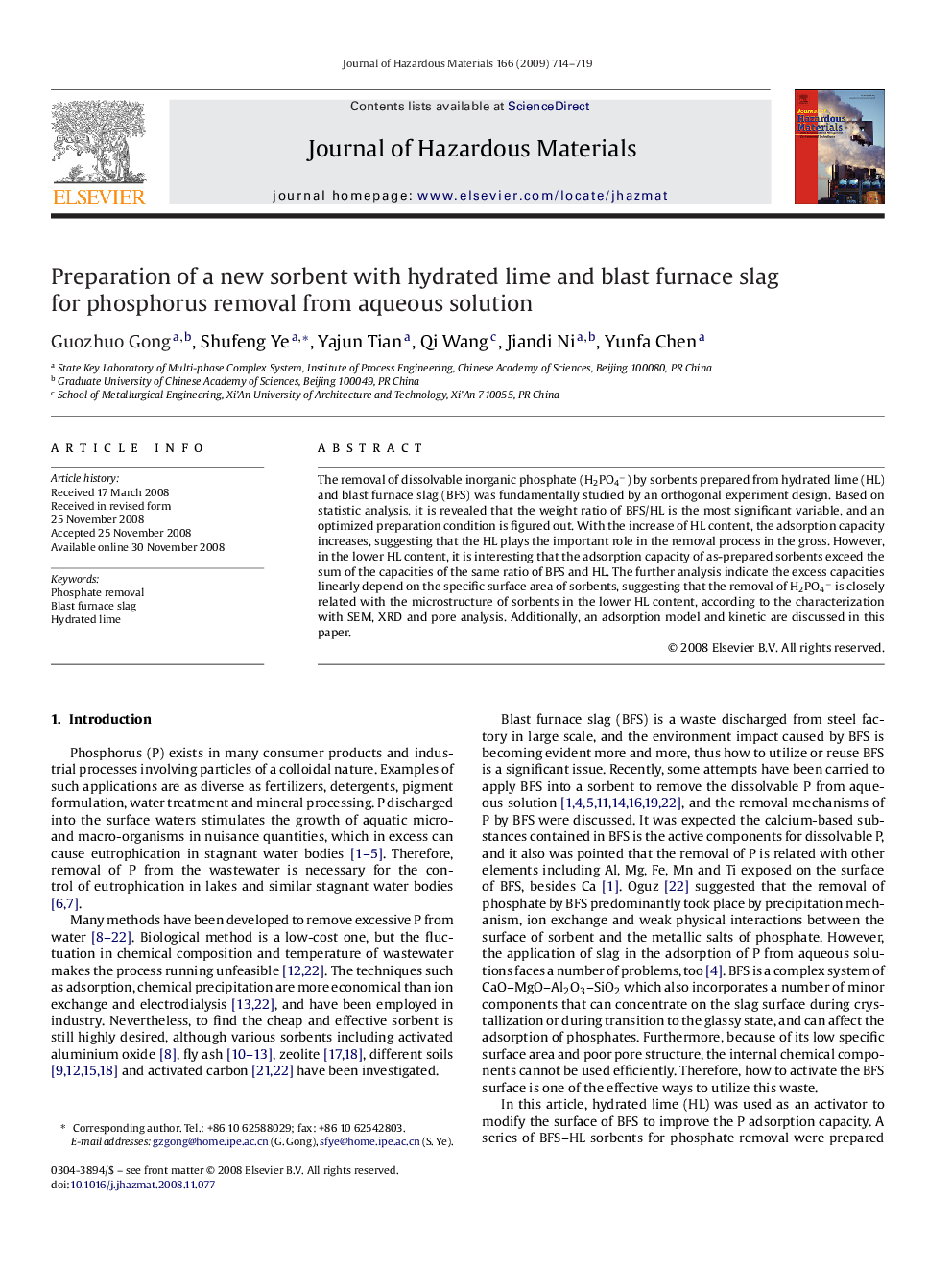| Article ID | Journal | Published Year | Pages | File Type |
|---|---|---|---|---|
| 582001 | Journal of Hazardous Materials | 2009 | 6 Pages |
Abstract
The removal of dissolvable inorganic phosphate (H2PO4â) by sorbents prepared from hydrated lime (HL) and blast furnace slag (BFS) was fundamentally studied by an orthogonal experiment design. Based on statistic analysis, it is revealed that the weight ratio of BFS/HL is the most significant variable, and an optimized preparation condition is figured out. With the increase of HL content, the adsorption capacity increases, suggesting that the HL plays the important role in the removal process in the gross. However, in the lower HL content, it is interesting that the adsorption capacity of as-prepared sorbents exceed the sum of the capacities of the same ratio of BFS and HL. The further analysis indicate the excess capacities linearly depend on the specific surface area of sorbents, suggesting that the removal of H2PO4â is closely related with the microstructure of sorbents in the lower HL content, according to the characterization with SEM, XRD and pore analysis. Additionally, an adsorption model and kinetic are discussed in this paper.
Related Topics
Physical Sciences and Engineering
Chemical Engineering
Chemical Health and Safety
Authors
Guozhuo Gong, Shufeng Ye, Yajun Tian, Qi Wang, Jiandi Ni, Yunfa Chen,
